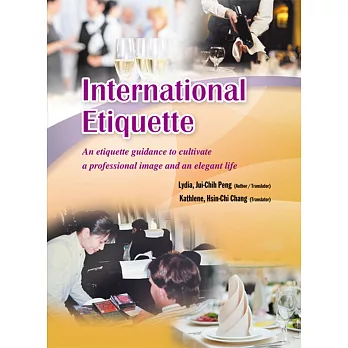AUTHOR'S PREFACE
Since the publication of my Chinese work, "Quốc tế lễ nghi: Không tỷ giáo nhĩ như hà tố tạo quan quang xan lữ đích chuyên nghiệp hình tượng", I have consistently felt the demand for an English version of the textbook. Consequently, I translated this book in the following year.
I teach "International Etiquette" courses in both Chinese and English at several universities and that brings me great joy and satisfaction. Additionally, my English classes are conducted in an English-Medium Instruction (EMI) format, with classes entirely delivered in English. Each semester, my class comprises a diverse mix of foreign students and proficient local students, contributing to the course's multicultural atmosphere. Nonetheless, the various English accents of students from different countries also pose a challenging aspect to the classroom. As a result of that, it prompted me to believe that having an English textbook as a companion could provide students with a reference to better understand the lesson. For students with weaker English-speaking skills, with a book as their reference could encourage them to participate more actively in class discussions.
The Ministry of Education is currently actively promoting English Medium of Instruction (EMI) teaching. International Etiquette is a subject that is relatively relatable yet interesting, making it highly suitable for incorporation into various departments as EMI courses. For local students, this International Etiquette book also serves as an excellent tool for learning English. When using it, I recommend using it alongside the Chinese version. This approach allows students to learn international etiquette while simultaneously enhancing their English proficiency.
I have published this English textbook with the hope that it can contribute to the promotion of English teaching at all levels of schools. For teachers conducting classes in English, this book serves as a convenient English teaching resource. It also includes carefully designed course activities, group discussions, and practical exercises, ensuring the ease of implementation within the curriculum.
My student, Kathlene Chang, was a participant in my International Etiquette viii International Etiquette English class at National Chung Hsing University, and subsequently served as my teaching assistant for the International Etiquette course for four consecutive semesters. She made significant contributions to the translation work of this book.
Jui-chih, Peng 2023.8.23
